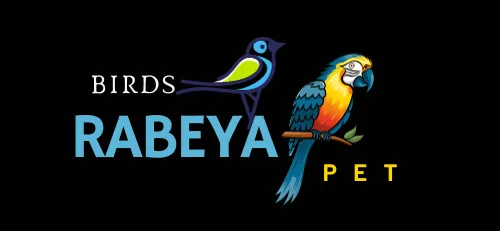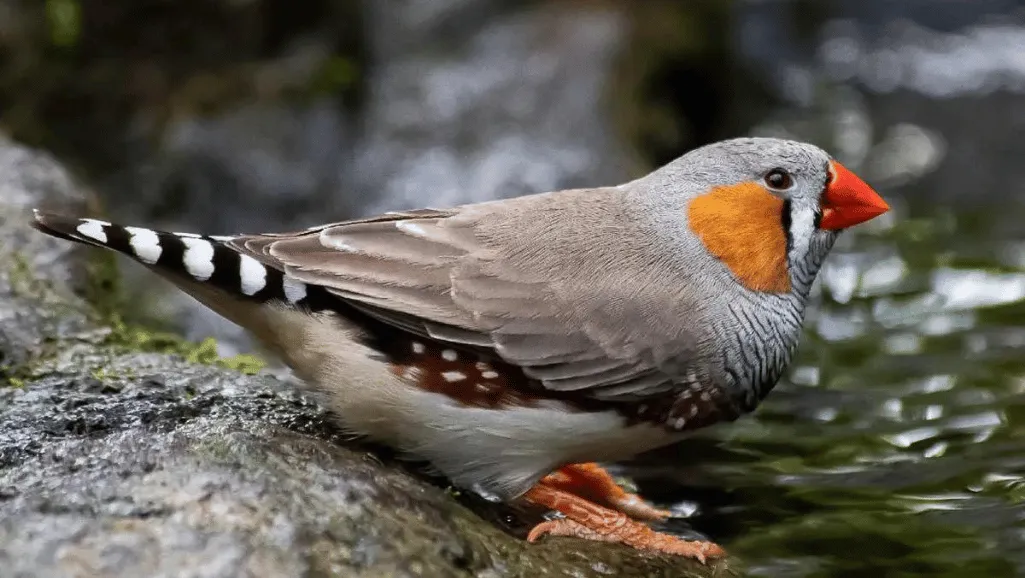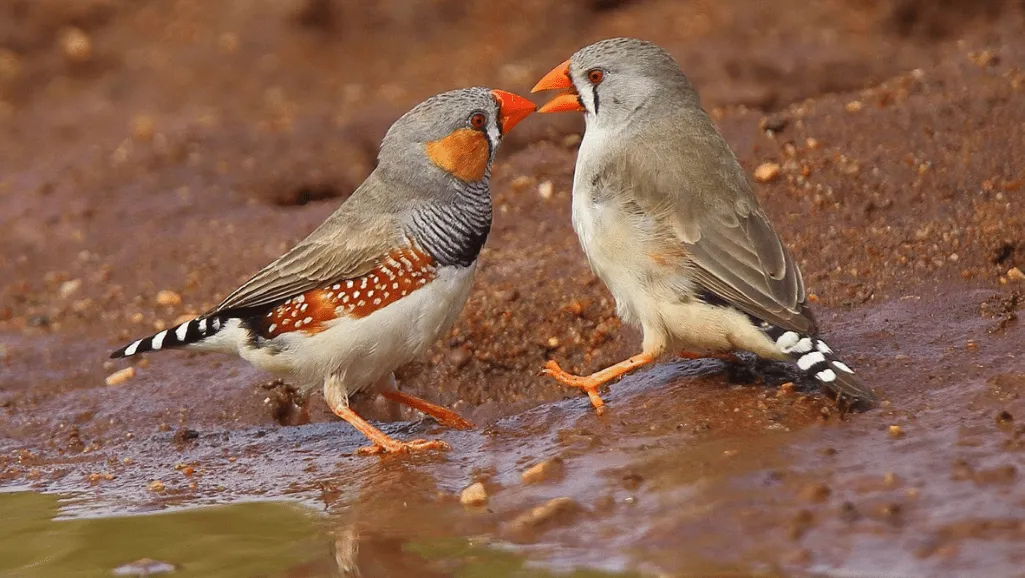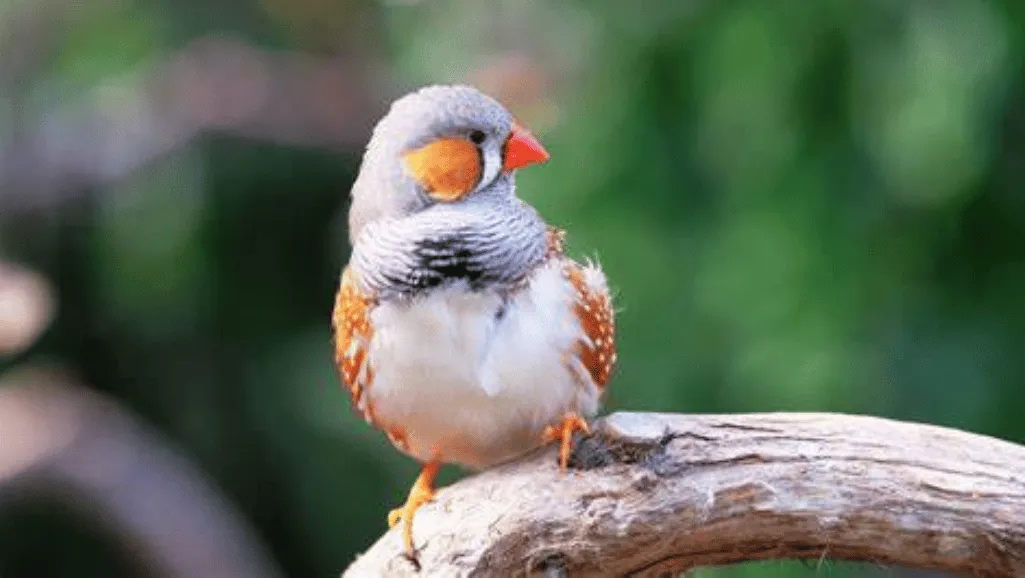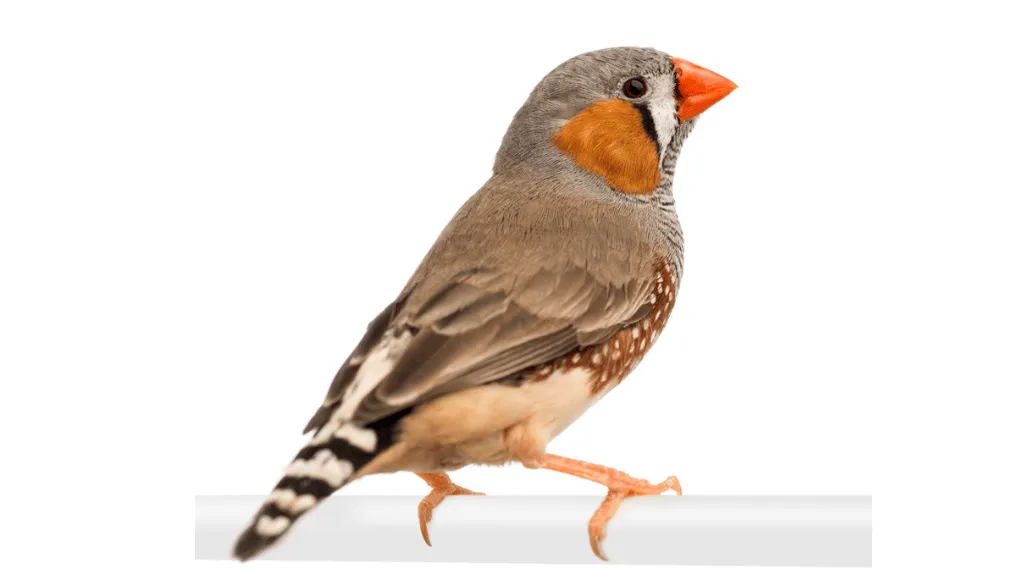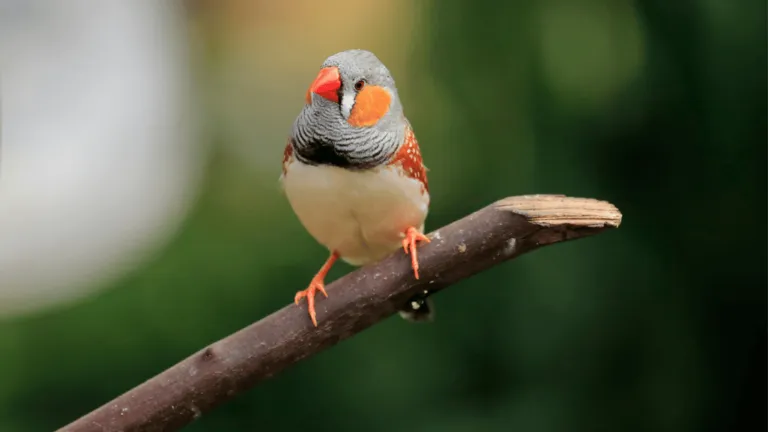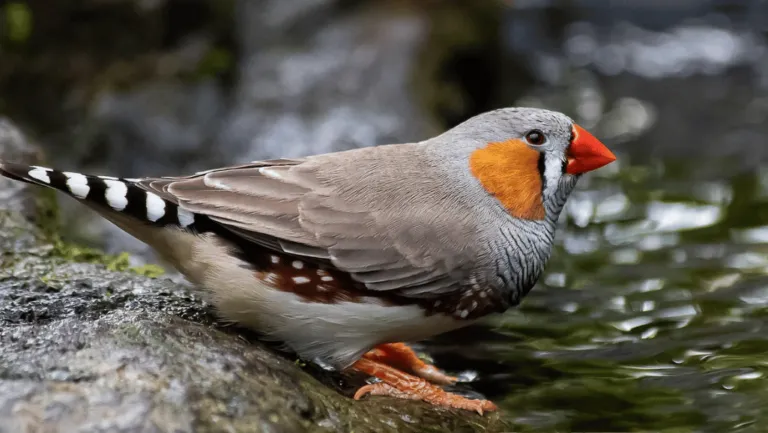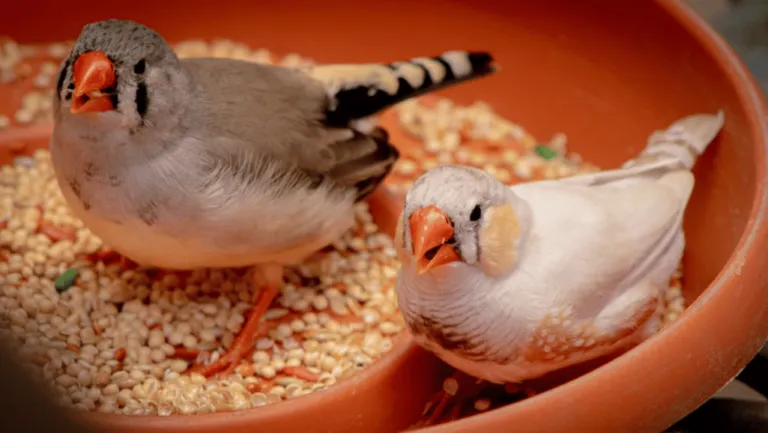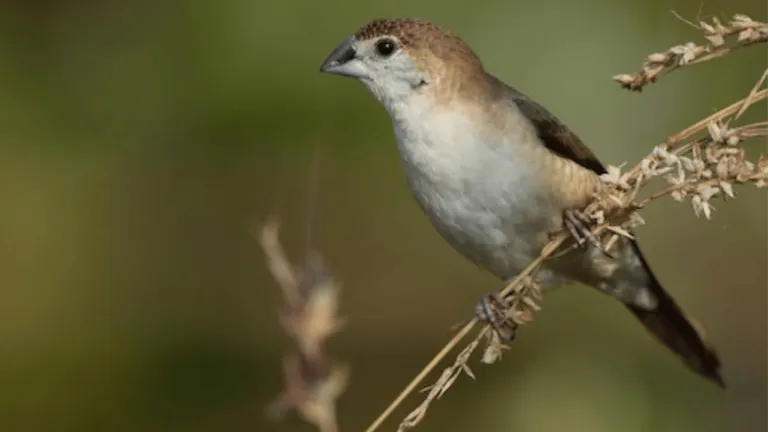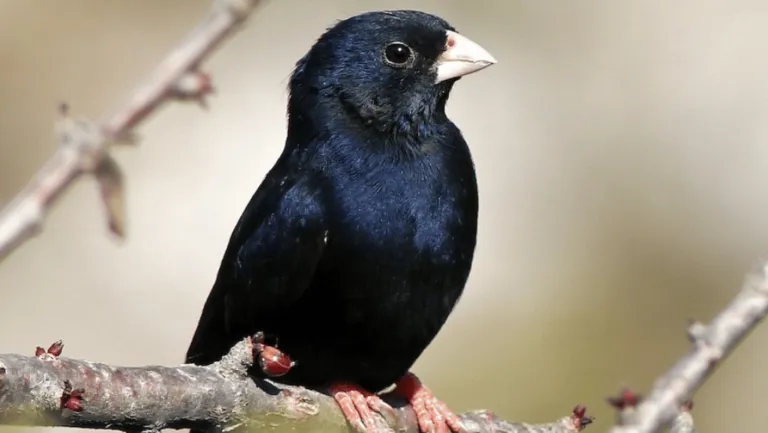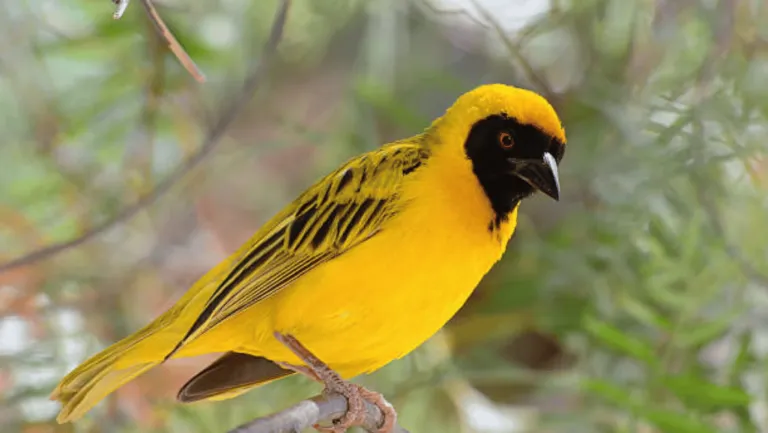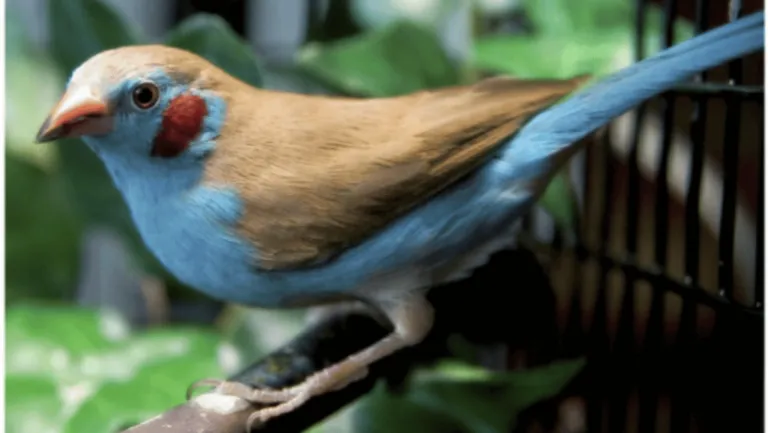The Zebra Finch is a charming and social seed-eating songbird native to Australia. With its vibrant stripes and melodic chirps, this delightful bird adds a touch of beauty and music to its surroundings. Zebra Finches are not only visually appealing but also play a crucial role in avian biodiversity, contributing to the rich tapestry of species in their unique finch species habitat.
Characterized by its soft gray feathers, red eyes, tear-drop markings, and bright orange legs and beak, the Zebra Finch is truly a sight to behold. Males boast additional black mustache markings and a bib of black stripes, while females are elegantly uniform in their gray hue. These Zebra Finches thrive in the company of their flock, forming lifelong monogamous pairs for breeding.
Key Takeaways:
- Zebra Finches are charming and social seed-eating songbirds native to Australia.
- They are known for their vibrant stripes, melodic chirps, and unique features like red eyes and bright orange legs.
- Zebra Finches live in flocks and form lifelong monogamous pairs for breeding.
- These songbirds play a vital role in avian biodiversity, enriching the finch species habitat.
- Appreciating the beauty and charm of Zebra Finches helps us understand and preserve avian diversity.
Zebra Finch Care: Tips for Keeping as Pets
Zebra Finches are popular pets because they are relatively easy to care for. They are hardy birds that can tolerate changes in their environment. It is best to keep them in pairs or small groups to ensure companionship.
When it comes to choosing a cage for your Zebra Finch, size matters. These birds are not quiet and frequently call to each other, so they require a spacious cage that allows them to exercise their wings. A minimum cage width of 24 inches is recommended to give them room to move around comfortably.
Additionally, the cage should provide multiple perches for the finches to perch and hop on. This will help simulate their natural behavior and keep them active and entertained.
It’s important to pay attention to the spacing between the bars of the cage. Zebra Finches are small birds, and the cage should have no more than 3/8 inch of space between the bars. This will prevent any potential escape or injury.
Proper nutrition is crucial for the health of your Zebra Finches. They should have a seed mix available at all times, as it is their primary source of nutrients. Make sure to choose a high-quality seed mix specifically formulated for small birds.
In addition to the seed mix, Zebra Finches enjoy occasional treats like millet sprays and fresh greens. These treats provide variety in their diet and contribute to their overall well-being. However, remember to offer treats in moderation to prevent overeating.
Water is an essential component of their diet, so ensure they have access to clean, fresh water at all times. To provide a source of calcium for their bone health, include a cuttlefish bone in their cage. This will also help them keep their beaks trimmed.
Overall, providing the right care and environment for your Zebra Finches will ensure their well-being and happiness as pets. By following these tips, you can create a comfortable and enriching living space for your feathered friends.
Zebra Finch Habitat and Behavior in the Wild
In the wild, Zebra Finches can be found in the drier areas of Australia, where they thrive in flocks of up to 100 birds. These charming songbirds inhabit diverse habitats, including dry wooded grasslands near watercourses. Their adaptability allows them to survive in various environments, displaying their remarkable ability to cope with changing conditions.
As diurnal creatures, Zebra Finches are most active during the day, engaging in essential activities such as foraging, socializing, and courtship. They sleep at night, taking necessary rest to recharge for the next day’s activities.
During the breeding season, the large flock of Zebra Finches undergoes an interesting transformation as it splits into smaller groups, each with its own nesting territory. This division ensures that the birds have ample space and resources to raise their offspring successfully.
Zebra Finches are known for their unique songs, which play a crucial role in their communication and recognition within the flock. The birds use their songs to express various emotions and messages, including territorial claims, warnings, and courtship calls. The ability to sing is not innate but acquired through learning from other birds, making their songs a captivating blend of tradition and individuality.
Male Zebra Finches utilize their melodic tunes and courtship dances to impress females during the mating season. These elaborate displays showcase the male’s fitness and prowess, with females often choosing a mate based on the quality of his performance. Once a pair forms, they establish a monogamous bond and mate for life, sharing the responsibilities of raising their offspring.
Flock Dynamics
Zebra Finches display fascinating dynamics within their flocks. These social creatures form intricate relationships and hierarchies that contribute to their overall well-being. Within the flock, there is a clear division of labor, with individuals taking on specific roles such as sentinels, leaders, and caretakers.
The cohesive nature of Zebra Finch flocks provides several advantages, including improved foraging efficiency, increased protection against predators, and enhanced reproduction success through the sharing of valuable resources and information. The social interactions within the flock are essential for the bird’s overall survival and allow them to thrive in their natural habitat.
Summary:
In their natural habitat, Zebra Finches demonstrate remarkable adaptability to various environments. They thrive in flocks, relying on their unique songs and social interactions to communicate and maintain cohesive relationships. Courtship and mating rituals play a significant role in the life of these charming songbirds, ensuring the continuation of their species. Understanding their habitat, behavior, and flock dynamics provides valuable insight into the complex world of Zebra Finches.
Zebra Finch Identification and Physical Characteristics
Zebra Finches are fascinating birds with distinct physical features that allow for easy identification. These charming creatures display subtle differences between males and females, making it easier to distinguish between the two. Let’s take a closer look at the physical characteristics of Zebra Finches.
Male and Female Differences
Male Zebra Finches exhibit vibrant colorations, enhancing their visual appeal. They sport notable features such as:
- Orange chestnut cheek patches
- Striped throat
- Black bar on the breast
- Chestnut flank with white spots
Females, on the other hand, have a more uniform gray coloration without the striking patterns and colors found in males.
Physical Features
Zebra Finches have a characteristic gray plumage adorned with black “tear drop” eye stripes, enhancing their distinctive appearance. They possess zebra-like black and white barring on the rump and upper tail, further setting them apart. Both males and females boast red eyes, a red bill, and orange-yellow legs and feet.
These small songbirds weigh approximately 10-15 grams and measure around 4 inches in length as fully grown adults, making them a delightful addition to any avian community.
To visually appreciate the physical characteristics of Zebra Finches, take a look at the image below:
By understanding the unique identifying traits and physical features of Zebra Finches, bird enthusiasts and pet owners can better appreciate the charm and beauty of these striped songbirds.
Zebra Finch Breeding and Parenting Habits
Zebra Finches are known for their dedicated parenting behavior and intricate nest building habits. Let’s explore their fascinating breeding process and how they care for their young.
Nest Building
- The female Zebra Finch takes the lead in selecting the nest site.
- The male gathers materials, such as twigs, grass, and feathers, for the nest construction.
- The female then painstakingly weaves these materials together to form a loose dome-shaped nest.
Incubation Period and Hatching
After the nest is built, both parents take turns incubating the eggs. The female sits on the eggs for approximately two weeks until they hatch.
Parenting Behavior
- Once the eggs hatch, both parents play an active role in caring for the young chicks.
- They diligently feed their offspring a combination of regurgitated food and seeds.
- The parents also protect the chicks from potential predators and maintain the cleanliness of the nest.
Zebra Finches are highly attentive parents, ensuring the well-being and survival of their offspring. Their collaborative efforts in gathering materials, constructing the nest, and nurturing the young demonstrate their dedication to family life.
Zebra Finch Habitat and Distribution
Zebra Finches are fascinating birds that can be found in various habitats across Australia. They are part of the Australian grassfinch family and are the most common and widespread members of this group. These charming little birds have their own unique preferences when it comes to habitat and distribution.
When it comes to their distribution, Zebra Finches have a wide range across the Australian mainland, excluding Cape York Peninsula and certain coastal areas. In addition to the mainland, they can also be found in the islands of Timor and the Lesser Sunda Islands. This wide distribution speaks to their adaptability and ability to thrive in different environments.
When it comes to habitat preferences, Zebra Finches tend to favor drier areas. They are commonly found in dry wooded grasslands near watercourses. These areas provide them with the necessary resources such as food, water, and shelter. Zebra Finches have adapted to survive and thrive in these habitats, showcasing their resilience and ability to make the most of their surroundings.
| Fact | Description |
|---|---|
| Common Name | Zebra Finch |
| Scientific Name | Taeniopygia guttata |
| Habitat | Dry wooded grasslands near watercourses |
| Distribution | Across the Australian mainland (excluding Cape York Peninsula and certain coastal areas), Timor, and the Lesser Sunda Islands |
| Preferred Habitat | Dry areas with access to water |
Understanding the habitat and distribution of the Zebra Finch provides valuable insights into their natural environment and highlights their ability to adapt to different conditions. These charming birds can be found in various locations, bringing their beauty and melodic chirps to different parts of Australia and beyond.
Zebra Finch Feeding Habits and Diet
Zebra Finches are seed-eating birds known for their unique feeding habits and diet preferences. These charming birds feed in large flocks and have a diverse dietary range.
When foraging, Zebra Finches primarily consume fallen or ripening grass seeds. They have a particular affinity for grass seeds, which make up a significant portion of their diet. However, they are opportunistic eaters and may also consume insects, especially when feeding their young.
Unlike some other grassfinches, Zebra Finches do not pull seed heads down with their feet. Instead, they feed on the ground, pecking at the seeds using their beaks.
Their diet in captivity should consist of a seed mix specially formulated for small birds. This mix typically includes millet, canary seed, and other nutrient-rich seeds. Providing a varied seed mix ensures that Zebra Finches receive a balanced and nutritious diet.
Additionally, Zebra Finches can enjoy occasional treats to add variety to their diet. Millet sprays, grubs, and fresh greens can be given as treats to supplement their seed-based diet and provide additional nutrients.
Here is a summary of Zebra Finch feeding habits and diet:
- Feed primarily on fallen or ripening grass seeds
- Occasionally consume insects, especially when feeding their young
- Feed on the ground, pecking at seeds with their beaks
- Diet consists of a seed mix for small birds, including millet and canary seed
- Treats like millet sprays, grubs, and fresh greens can be given occasionally
By understanding the feeding habits and diet preferences of Zebra Finches, pet owners can ensure that these delightful birds receive proper nutrition to thrive in captivity.
Zebra Finch Communication and Song
Zebra Finches are highly social birds that rely on unique songs for communication and social interaction. These small songbirds have developed an impressive vocal repertoire that plays a crucial role in their daily lives.
Each male Zebra Finch possesses a distinctive song, serving as its individual “vocal fingerprint.” Females, in turn, show preferences for songs with intricate patterns and rhythms, indicating good health and fitness in potential mates.
Zebra Finches use their songs for various purposes, including daily recognition of kin and other members within their colony. The songs also play a vital role in mate recognition and courtship, as the male uses his unique song to woo and attract a female companion.
What sets Zebra Finches apart from many other bird species is their remarkable vocal learning ability. These birds are skilled vocal learners, capable of imitating sounds they hear in their environment. This remarkable talent enables them to learn and develop their unique songs through exposure and imitation.
Researchers find Zebra Finches fascinating study subjects when it comes to vocal learning and communication. By observing and studying these birds, scientists gain insight into the intricate mechanisms associated with vocal learning and social communication in both avian and human species.
Overall, Zebra Finch communication through their unique songs plays a crucial role in their social interaction, courtship, and identification. These charming songbirds showcase their vocal talents and ability to learn and imitate sounds, providing fascinating insights into the world of avian communication.
Conclusion
The Zebra Finch is a captivating seed-eating songbird that enchants with its vibrant stripes and melodic chirps. This popular pet bird is favored for its relatively easy care requirements, making it an excellent choice for bird enthusiasts. In the wild, Zebra Finches live in flocks and form monogamous pairs for breeding, displaying their social nature and strong bond with their chosen partners.
These charming birds communicate through unique songs, using vocal learning to imitate sounds in their environment. By understanding their habitat, behavior, and breeding habits, both pet owners and bird enthusiasts can develop a deeper appreciation for the Zebra Finch’s beauty and charm.
From their diurnal lifestyle to their ability to form lifelong partnerships, Zebra Finches showcase the wonders of avian biodiversity. Whether enjoyed as pets or observed in the wild, these striped songbirds bring joy and fascination to those who appreciate their unique presence.
Frequently Asked Questions
What is a Zebra Finch?
The Zebra Finch is a charming and social seed-eating songbird native to Australia known for its vibrant stripes and melodic chirps.
Are Zebra Finches good pets?
Yes, Zebra Finches are popular pets as they are relatively easy to care for and can tolerate changes in their environment.
What do Zebra Finches eat?
Zebra Finches primarily eat a seed mix for small birds that includes millet and canary seed. They can also enjoy occasional treats like millet sprays, grubs, and fresh greens.
How do Zebra Finches communicate?
Zebra Finches use unique songs for communication. Each male has a unique song, and females show preferences for songs with complex patterns and measures of health and fitness.
How do Zebra Finches breed?
Zebra Finches form monogamous pairs for breeding. The female selects the nest site, and both parents contribute to nest-building and caring for the eggs and young.
Where are Zebra Finches found in the wild?
Zebra Finches are found in the drier areas of Australia, particularly in dry wooded grasslands near watercourses.
What is the size and appearance of a Zebra Finch?
Zebra Finches are about 4 inches long and primarily gray in color with red eyes, tear-drop markings, and bright orange legs and beak. Males have additional black mustache markings and a bib of black stripes.
How long do Zebra Finches live?
Zebra Finches have an average lifespan of 5 to 7 years, although some individuals may live longer with proper care.
Can Zebra Finches imitate sounds?
Yes, Zebra Finches are vocal learners and can imitate sounds in their environment. They are often used as models for studying vocal learning and communication.

